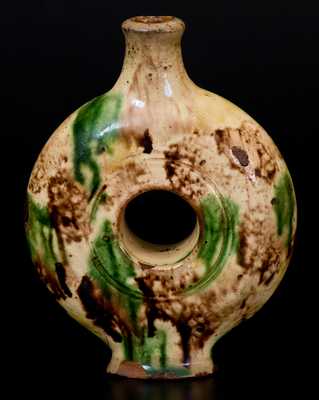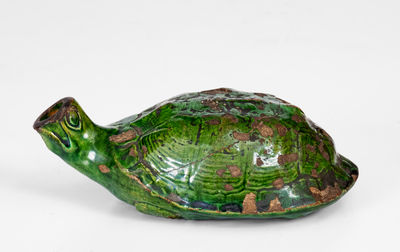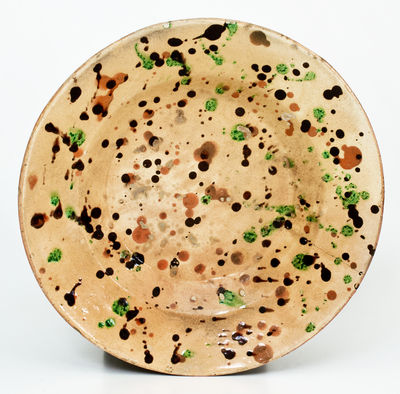Exceedingly Rare and Important Southern Redware Mug with Profuse Three-Color Slip Decoration, Alamance County, NC origin, probably Jacob Albright, Jr. and Henry Loy, late 18th or early 19th century, large-sized cylindrical mug with footed base and tooled rim, the surface covered in a reddish slip wash and decorated in cream, green, and brown slip with two tulip plants embellished with spots. These floral designs are flanked to the left and right by vertical stripes of cream-and-brown slip with cream-spotted borders. The lower handle terminal is decorated with a cream-and-brown slip daisy blossom. The mug's exterior and distinctive yellow-clay interior are covered in a clear lead glaze. This recently-discovered example is one of a very few Alamance County, North Carolina, redware mugs from this early period known. The artistic application of the decoration and use of four colored slips (reddish iron-based engobe with trailed copper, manganese, and kaolin slips) indicate the sophistication of a Southern potting school which has only recently been uncovered. The majority of known examples of Alamance County, NC slipware are held in museum collections, most prominently Old Salem Museum and Gardens in Winston-Salem, NC. Others can be found at the Colonial Williamsburg Foundation in Williamsburg, VA, the Henry Ford Museum in Dearborn, MI, and the Barnes Foundation in Philadelphia, PA. Provenance: A fresh-to-the-market example, from a forty-year Pennsylvania collection. Missing handle. Top-to-bottom crack with some thin flakes along crack at shoulder. A few small shallow rim chips. A tight, faint hairline from rim, measuring a few inches long. Small chips and wear to base. Glazed surface retains brilliant luster and survives in strong condition with typical wear, primarily to cream slip spots. H 6" ; Diameter (at base) 4 1/8".
















